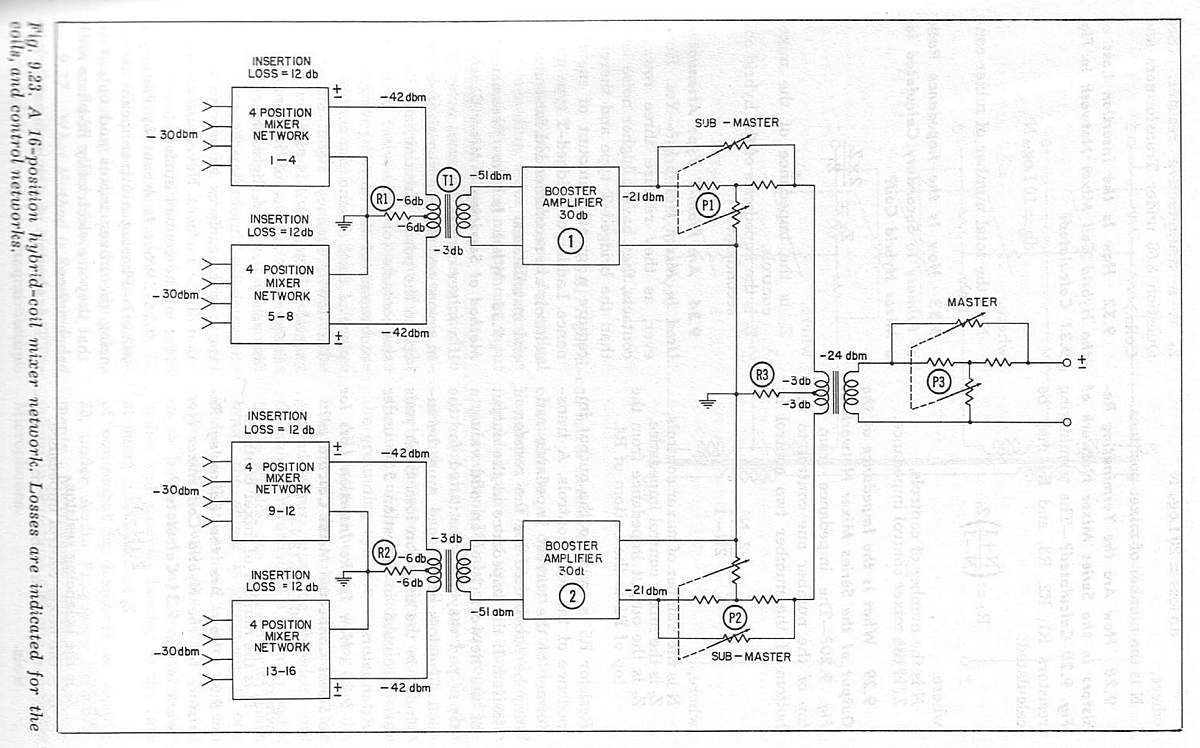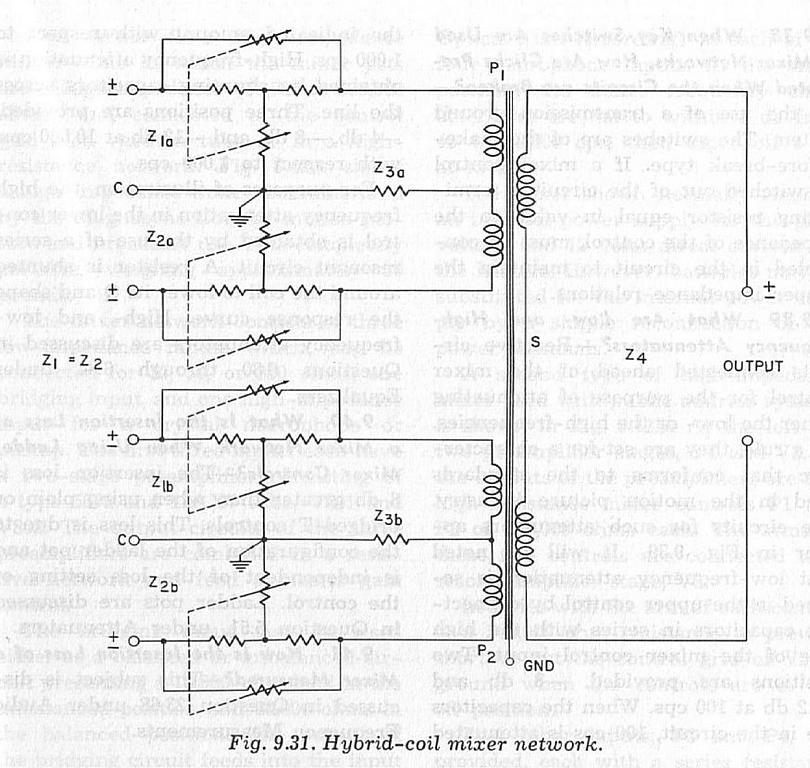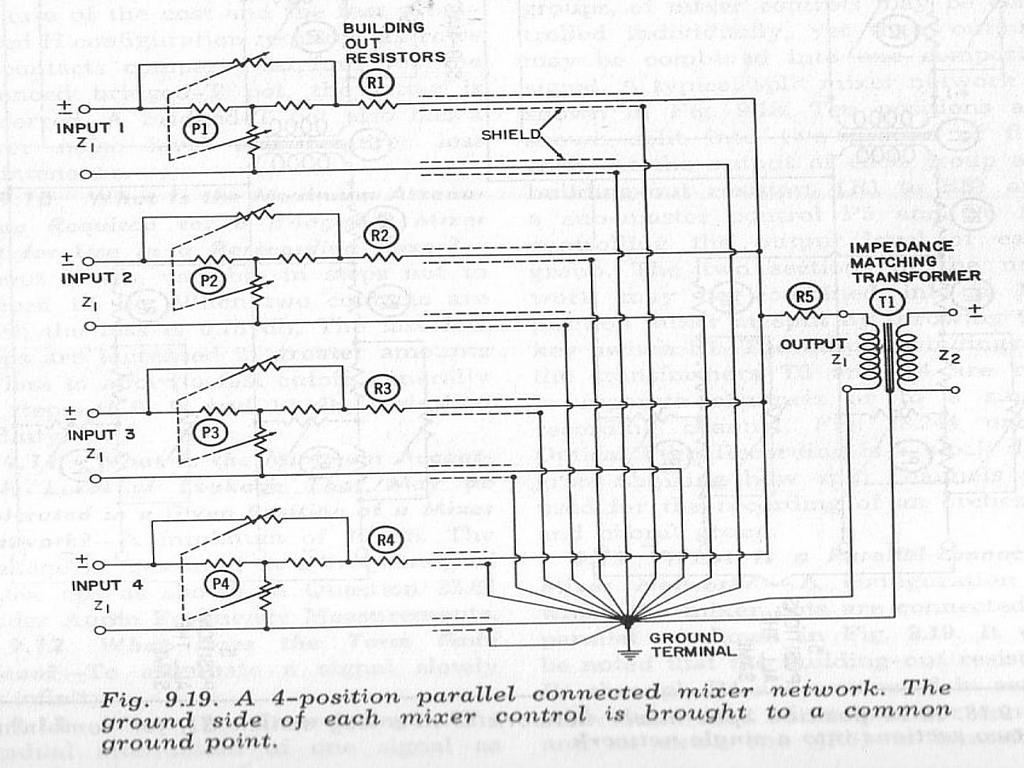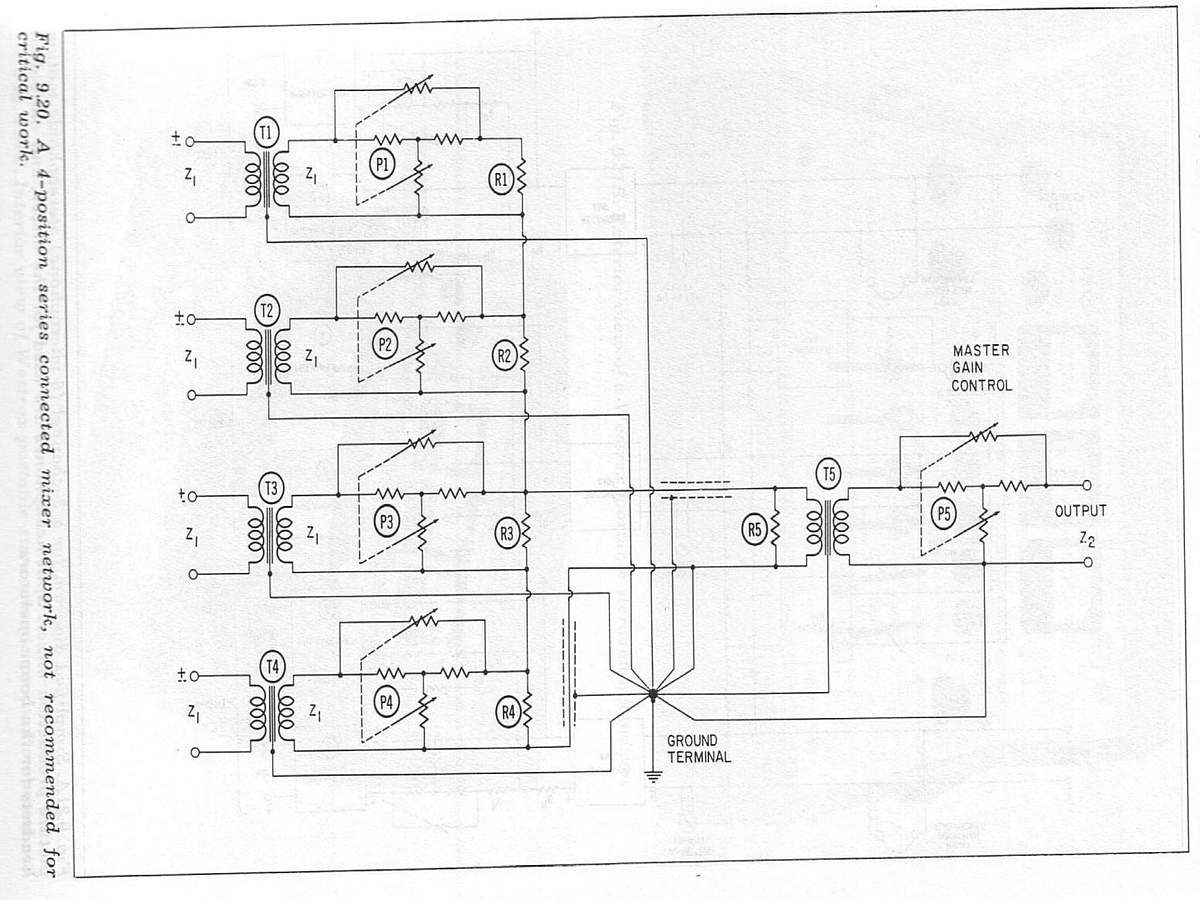vari-mu
Well-known member
MORE schematic of the 50 :








For all intents, these two are using resistor-mixing.vari-mu said:And MORE :


Purely resistive mixing would give only 9dB attenuation.quantyk said:That UTC 50-60 device is fascinatingly simple, and I also wonder how it sounds. -12db loss seems less than a purely resistive approach, but I wonder to what extent this loss is due to the resistance elements, rather than the transformer elements.
They are indeed there for properly loading the secondary of the transformer, which has two roles:1. would I be correct in inferring that the 68-2800-68 Resistors on each A20 are for loading the secondary to deliver optimal frequency response? (zobel network)
The mixing resistor is a combination of the source impedance reflected to the secondary, the attenuator's equivalent resistance and the 330r.2. and the 330r act as mix resistors within the paralleled secondary network?
If you want, I can post the .asc file for LTSpice simulation.quantyk said:Working on a schematic/simulation of an adaptation of the UTC circuit, and will post for comments/review shortly. I'm hoping to use the UTC circuit as a basic template and expand/adapt for this application.
I've attached an attempt to redraw the schematic, and I'd appreciate a friendly review to make sure I've got the functional circuit & calculations right, as interpreted from the UTC circuit posted by vari-mu.
Yes, but you need to add the DCR of the windings, that I have estimated at about 40 ohms.Assuming a reflected load of 600 from the input primaries, I calculated that the input TF secondary would be in series with the 68r resistor (668 ohms), and this is in parallel with the 2700r, for an equivalent series value of 535 ohms. (1/(1/668)+(1/2700)).
This value, in series with the 68r and 330r resistors, makes for a bus impedance of 311 ohms, as Abbey pointed out. (1/(1/933)*3), which, in series with the 330r before the output primary, creates a load of roughly 600 ohms reflected to the output secondary.
Is this approach correct?
Yes, but it's overthinking. Most transformers operate satisfactorily with even a 2:1 mismatch.To adapt the design then, I would need to satisfy the required loading of the input secondaries and match the optimal overall buss impedance for the output transformer to the mix amp, right?
Any properly designed amplifier, once put in situation, with the correct amount of NFB, will have a sufficiently high impedance for any transformer.From what i understand, MOSFET amps can have fairly high impedance inputs, so I can probably work with the repeat coil transformer to provide a good input level for the mix amp.
Valid only if the windings are on a common core with near 100% coupling.CJ said:unlike resistors, where two 600 ohm resistors in parallel give you 300,
two 600 ohm transformer windings wired in parallel will give you 600 ohms.
You can't say that here, because there are two transformers, each secondary loaded, so each primary reflects 600 ohms.this is because the turns ratio does not change.
This is valid only because all the windings are on a common core, so 100% coupled.sometimes you will see a power amp output transformer with parallel windings on the secondary, well the current gets split between the two windings, so the transformer core still sees X amount of amps thru Y amount of turns, are you confused yet? :-X
I hope it uploads correctly. You'll have to rename it .ascquantyk said:Abbey; yes, the spice circuit would be great, as i'm learning to use spice now as part of this project. I'll put together an adapted schematic shortly.